(Translation from original article in Афиша-Город + photos/comments by Natalia Melikova in response)
"Guys, relax, you will not control us": Narkomfin’s new life
Apartments in the Narkomfin building will be bought by friends of the owner, instead of preparing borscht will need to go to Coffeemania, and better to rebuild Shukhov Tower in New Moscow: "Gorod" talked with Alexander Senatorov, head of Kopernik, about the future of monument buildings.

Narkomfin is well on the way to its "new life"... - photo: April 11, 2014
In 2007, when you were involved with the Narkomfin building, then you wanted to do a boutique hotel, and now what will be there?
In the new concept we are keeping the function of Mosei Ginzburg’s original design. The residential block will remain residential, private apartments will be there. The communal block will remain as a public space: there, where the dining room was — will be a restaurant; where the kindergarten was planned — will be a children's play center. And of course, we will return the original appearance to the building, which it lost because the first floor was built up. In addition, practical people attached garages and an upper floor to the communal block, and the joined windows they divided into normal windows — well, so that they opened. Plus the façade was badly damaged, which was made of the so-called kamyshit (cane fiber) — the last syllable of the word, "shit," best describes this material.
One can say that kamyshit (cane fiber) was innovative for its time, but not a durable material.
Well, how to explain to you in a literary way? Eighty years ago out of shit they tried to sculpt something. We don’t have any delusions that we will be able to a large extent restore the facade out of the original material. But in terms of the exterior, the new facade will look like the same. In reference to heritage discourse – the one who does not sacrifice the small things, loses everything. The key value of the building is in its unique layout designs – this we will keep. But kamyshit will become history.
In 2007, your team of experts, including the architect Ginzburg’s grandson, prepared a restoration project. It was approved by Mosgornaslediya. Why did you decide to change the design and bring in another architect?
We rejected the idea of doing a boutique hotel because it is not very convenient to do it here. These apartments are good for living, but absurd as hotel rooms. Such large apartment would have cost about $1500-2000 a day for the hotel to be profitable. Nobody will pay that kind of money — not to mention the fact that we do not comply with any standards for people with disabilities, simply in each apartment there are stairs. Since we started this project, we went through a crisis, we went through a period of fruitful cooperation with the red banner Alfa-Bank (Senatorov was in litigation with the bank for several years. — editor’s note) — so we have had enough time to understand ourselves, the building, and what is worth doing here.
The current architect of the project is Nikolai Pereslegin, Advisor to the Head of Mosgornaslediya. That is, the contractor and controlling body are closely related. Will there be, as demanded by activists and historians of architecture, any independent monitoring expert committee?
The most important regulators of this project — it is our common sense and conscience. There should be one person who makes the decisions. That will be me.
(article from April 15, 2014:
Nikolai Pereslegin on saving the Narkomfin building / Николай Переслегин о спасении здания Наркомфина
"I became aware of the work currently being carried out at Narkomfin. I am fundamentally opposed. It is illegal. As far as I know, the work being carried out has already been stopped by an inspection by Mosgornaslediye.
...
It is my deep conviction that the potential restoration project should be as much as possible open, and public. It is very important to involve in the process of restoration, both professionals and the public. After all, Narkomfin is more than just a building. It is an icon of its time, a whole world for many people. Strange that this is not remembered.")
It is wonderful when there is good will and conscience. But even better when there is a system that can regulate itself.
In our country, there is no system. Institutionalism — this is not about our country. And what is the fright here that during the restoration of Narkomfin we need to build some kind of system that, you know, would protect this great monument from the investor, who already has invested in it many years of his life, and several million dollars of his money? A couple of months ago we met with this concerned public. People came, in varying degrees of aggression, asked questions and got answers to all of them. I showed them the concept and described everything in detail. But they have already embarked on a warpath, and some time later sent a letter with the question: "How are we going to control you?" Guys, relax, you will not control us in any way. And without your public control we have rather formal procedures with Mosgornaslediya. No one in our country has experience with the restoration of constructivism. And in the world, those who made this era are only maybe a couple of people. The basis of success is my common sense and my experience. I built a lot in Moscow. I understand how to solve problems that no one has yet solved.
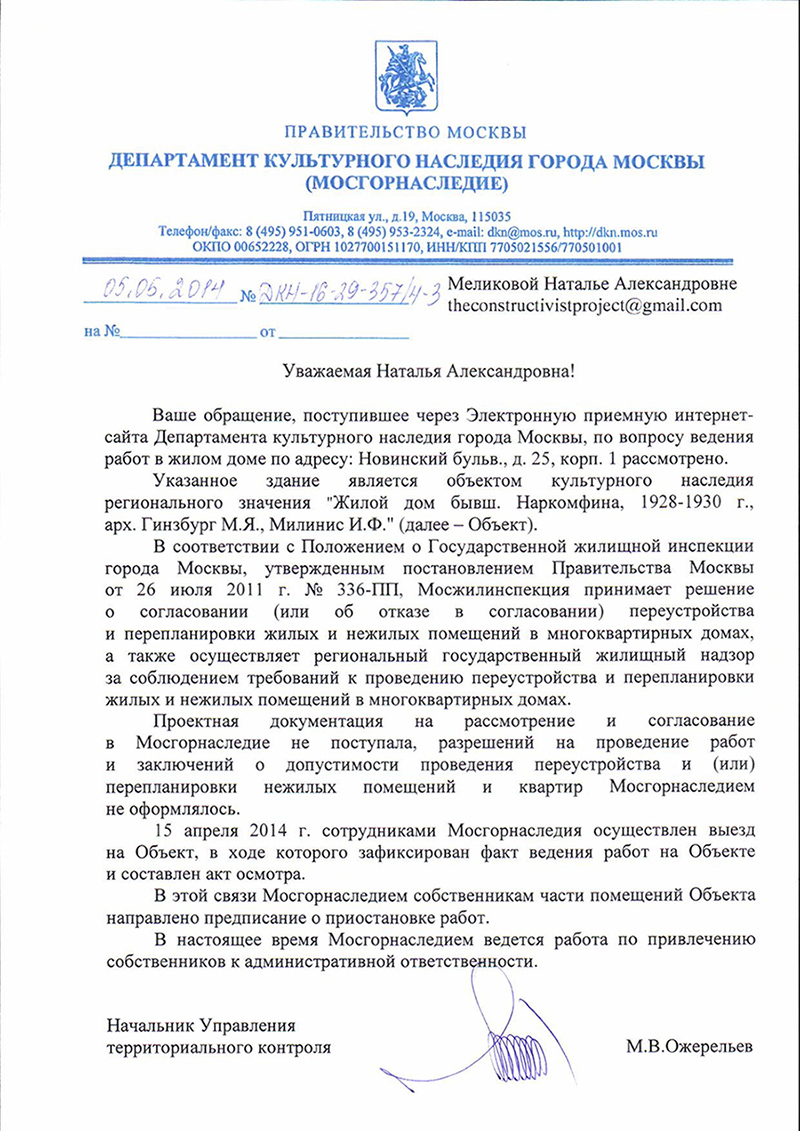
Part of the "formal procedures" with Mosgornasledie - a letter from May 5, 2014 saying:
"Design documentation for review and approval has not been received by Mosgornaslediye, the permission to undertake works and any conclusions about the acceptability of the conversion of the interior and [or] nonresidential redevelopments has not been issued."
From The Moscow Times article on April 13, 2014,
Constructivist Utopia Narkomfin Endangered by Renovation Project
"Senatorov says that he will welcome any outside help with the project, but eventually, all must go ahead as planned. 'I am ready to accept any help if they want to help us,' he said. 'If you want to help us with advice, with money, with work, everything — everyone who wants to help, help! But we are owners, and we have to do the restoration. We can’t wait to see whether somebody will help us but if somebody wants to help us we are willing to accept it,' said Senatorov."
Preservationists complain that already old radiators have been illegally removed and windows are being changed to glazing (стеклопакеты).
I especially like this claim: "Ah! You are sawing off radiators!" So what? Well it’s a radiator. Let’s without fanfare and without this squeaking: "There’s no beer!" It can be said calmer — simply, there’s no beer. What is the value of engineering equipment, which represents old stinking sewer pipes? We need to preserve the layout. As a result of the restoration we will be able to keep most of the materials. Old pipes have no value.
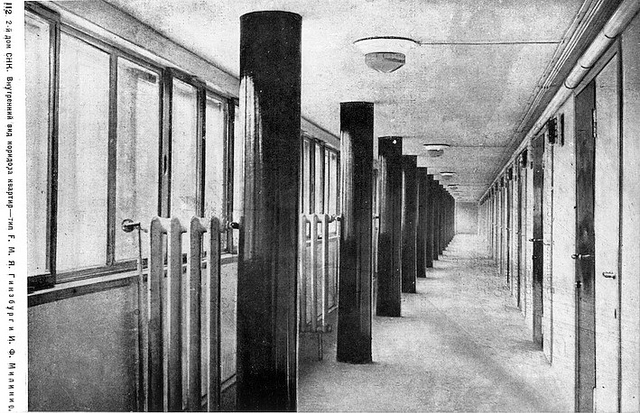
"Old pipes with no value" - archival photo
And what about the windows?
Everyone already has come to photograph our new windows to post it on social networks, and to raise a tantrum. Well hello, guys, I did say at the meeting that this is a temporary solution. The result will be double glazing as before, but one of the layers will be glazing (стеклопакет). On the outside everything will look like as it did before, but in function we will get a quality noiseless glazing.
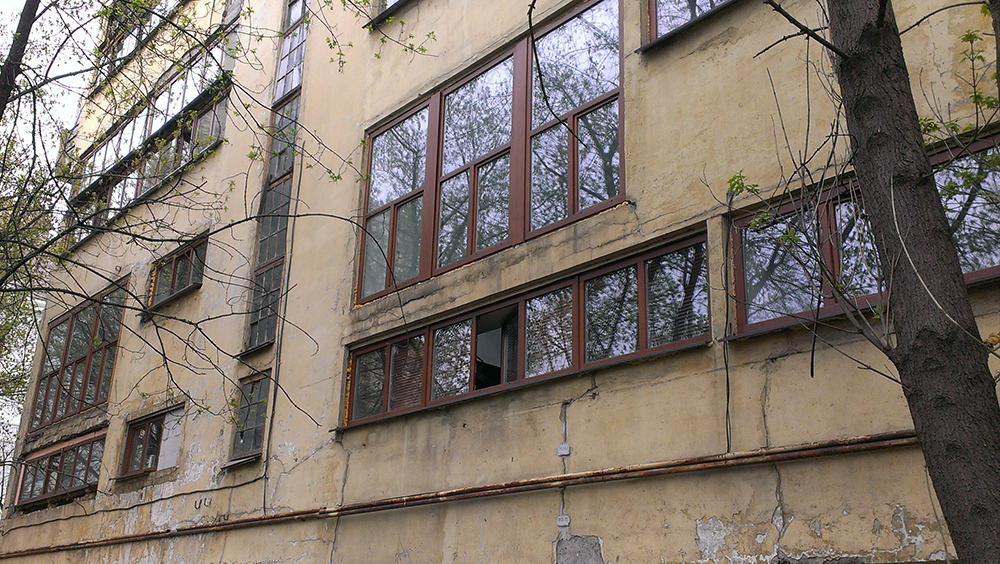
New windows - western facade
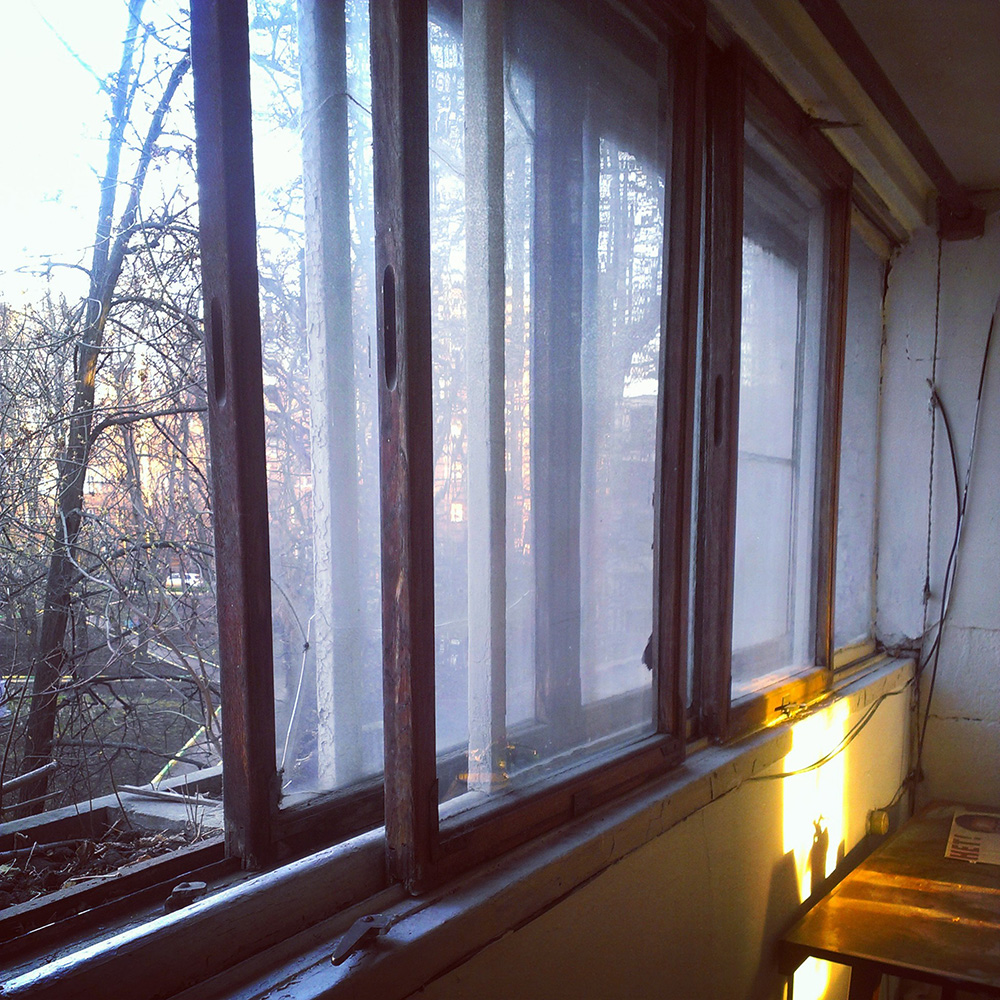
Original windows intact - April 2014
For expensive housing an elevator is needed. And there were only two stairwells. You are not allowed to change the layout. What will you do about this?
We will carefully incorporate the elevators into the stairwells. This is the only change of layout that we are going forward with. Currently there is an ugly elevator adjoined to the far stairwell — we will remove it. But we cannot do without any elevator.
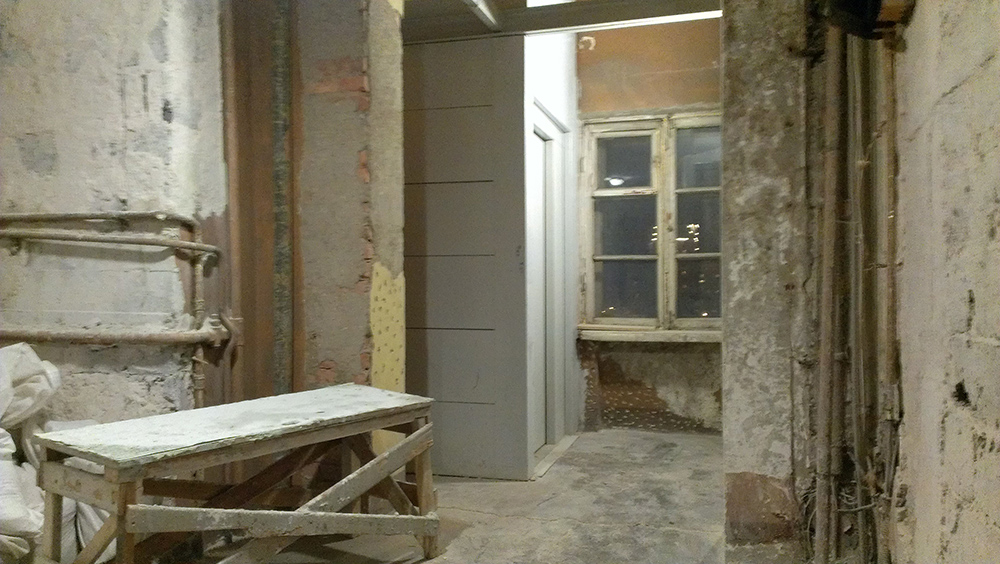
March 17, 2014
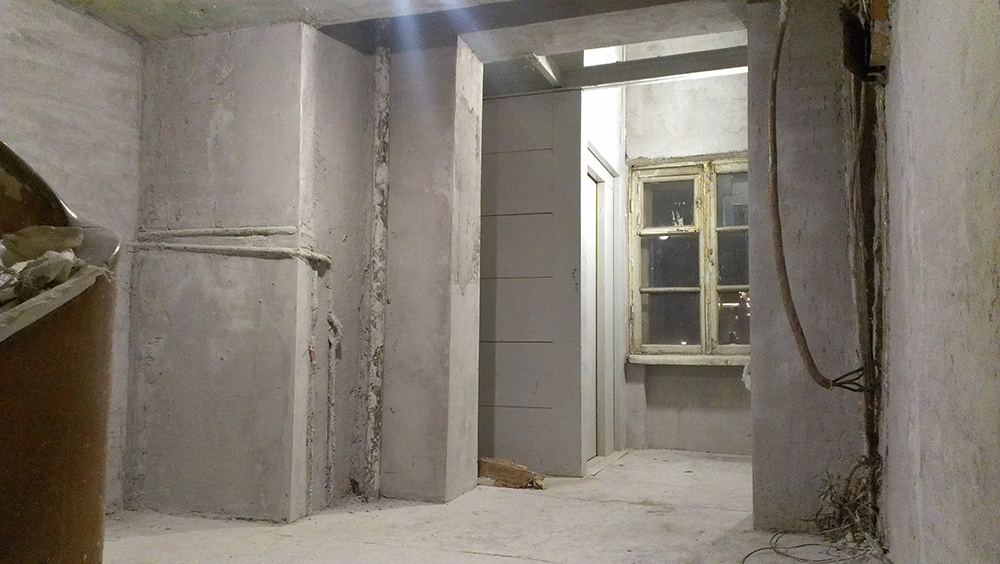
April 1, 2014
In reality, Narkomfin is a residential project. It is a Soviet utopian experiment on people, who were to live in cells with minimal household functions. From the point of view of modern man, a disturbing experiment. How can we reconcile our understanding of individual comfort with a careful restoration? How can a 30s dormitory be converted into luxury?
You know, perceptions change: what seems to be comfortable today will cease to be comfortable tomorrow. And then at some point, everything turns back — this is a cyclical process. And surprisingly, the housing that was invented in the 30s under the inhuman arrangement of society and daily life, today uncomfortable housing is becoming very practical. Ginzburg saw it the same way — they are all communists, they have a common table, laundry, in the morning they are supposed to go into these long corridors and do exercises there, and then go together to the cafeteria. But this was his idea of how life should be constructed, and in Soviet times it was uncomfortable. And people lived in these apartments without much pleasure. But today, the level of the development of services has reached such a state that to live in this format suddenly has become comfortable. Today this building more than meets the current ways of society. These city apartments present a small, but very hip in its architecture, two-level space. Ideal for one or two people. There are all services here — parking, restaurant, laundry and a recreation area on the roof. Yes, there is a small kitchen. Well, why does modern man need a big one — to boil a kettle and reheat pizza? In the communal block we will build a restaurant, presumably we will invite our friendly Coffeemania. Step out to eat or order home delivery. What else is needed? To cook borscht, to use a frying pan? Well it’s clear, the one who wants to cook borscht, will not get an apartment here.
And who are the people who will get [an apartment]?
Here there will be 42 apartments. Sales will be closed — a determined set of people on a list will be offered to buy them. Six months ago we moved here, and I have already brought various friends here. And many people come and say, "Awesome! Leave me one." There are enough people like these, I have a large circle of friends. We do not have the idea to sell it more expensively, it is more important for us to restore the idea of communal housing in the modern sense. It will be a home for a determined set of people, pleasant to us.
What will happen to the roof?
Ginzburg originally planned to build a house with a flat roof. But after the project was already completed, the People's Commissar of Finance Milutin said: "Where will I live?" Ginzburg threw up his hands in the air, and Milutin gestured: "Build it!" Besides, he was fond of architecture, which was at that time a quite fashionable pastime. So he himself designed the penthouse — a kind of button on the roof. With the Commissar one cannot really argue, so in front of it Ginzburg designed five more small one room apartments on the roof — to visually smooth out this bump. Out of these, we will create a mini-hotel with five rooms. We are thinking about organizing some kind of social life, about bringing in different interesting lecturers, to conduct exhibitions on the rooftop. Therefore, a hotel will come in handy, so that our guests could always stay there.


PHOTOS from April 11, 2014 of the roof and penthouse renovation
How much you have spent and how much more will you spend on this story? And how much will you potentially earn?
We have already spent about $18 million and plan to spend another $10-12 million plan to purchase the remaining areas and on restoration. We will sell the apartments and all public spaces will remain in our property to rent out for different services. This will be enough to make back everything.
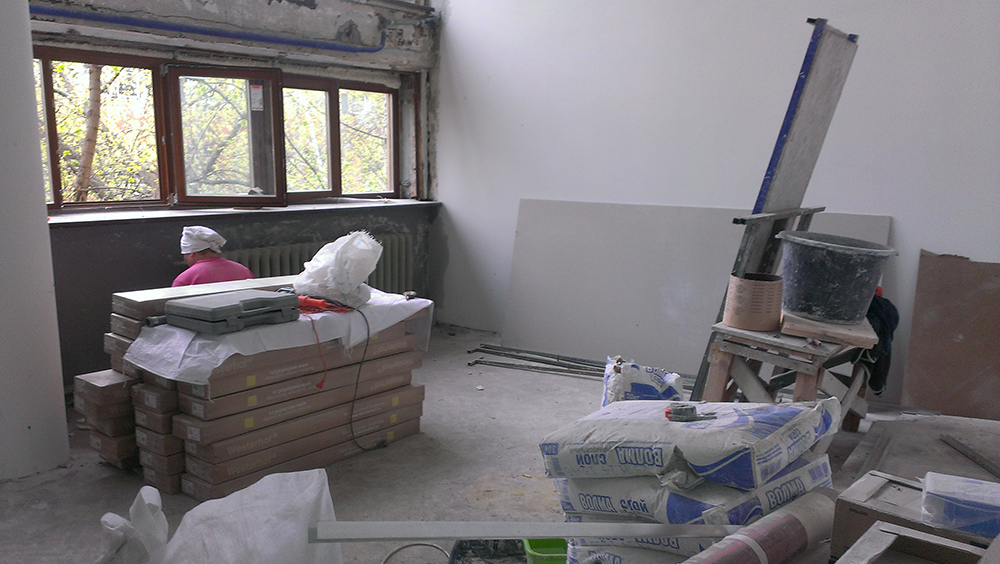
one of the larger K apartments undergoing renovation - photo: April 22, 2014
Do you still need to buy up a lot?
In the building there are four apartments left with former tenants. Plus 1,300 meters belong to Moscow. Actually, out of it more than half needs to be destroyed — this is the illegally added on first floor and all sorts of additions in the utility block. If Moscow had removed all that is subject to demolition, then in fact, nothing would be left to it in the building. But it will not do this for anything. Can you imagine the official, who was entrusted with 1,300 meters in the building, and he went and destroyed half? Well he's the enemy, and he should be shot. So we will buy up a lot and then break it — we are private owners, we can allow ourselves to do this.
What is the timeframe?
Timeframe depends on how quickly we will go through all the stages of negotiating the new concept. We hope to go through this procedure within a year and a half. And for the work itself much time is not needed — a year is enough.
How do you feel about what is going on with the monuments of constructivism in Moscow? For example, what do you think about the Shukhov Tower?
The Melnikova Research and Design Institute of Metal Construction, the former "Shukhov Workshop" — belongs to us. This is the main expert in the matter of what you can do with the tower. And anything can be done — it all depends on political will. We do not have established conceptions in our culture of what is actually valuable in architectural monuments. There is, for example, the Dutch system of preservation — they preserve all the materials and structures. But the British have a more pragmatic and utilitarian view of life. To them, it is the human idea and the design that is valuable: "A man thought up that this looked like this and stands like this? Very well then, let's demolish all this trash and with new technologies we will build it in the same way." We haven’t yet defined what to regard as valuable — we jump from one extreme to another.
And what do you personally think it’s worth doing with the tower?
Personally I like most of all the concept that we came up with. It may sound harsh and unpleasant. But in the current state of the tower to preserve it in the same place is impossible. The Ministry of Communications does not need it there. Now begins the endless correspondence — the Ministry of Culture will write: "Restore it!" And the Ministry of Communications will respond: "We have no money"; — "Restore it!", "We have no money," ... And like this it will crash down. Metal rivets are already flying from it. At the same time the lowest estimates to restore it at the same place are 400 million rubles. And to build a new, exactly identical one — 80 million. Feel the difference.
Well, in addition to the high cost there are such aspects as authenticity and the memory of the place.
These things have value, but not for the Shukhov Tower, because it is a symbol of engineering. This is not architecture. I understand — the Eiffel Tower, Champ de Mars, where all stroll. And what is here? It is not even visible from most places. It can be relocated to any other place. As for authenticity, in its present state with the restoration in place, for 400 million rubles under the most optimistic estimates 25% of the materials can be kept. And what kind of historical authenticity can one say about this? We propose a radical design, a bit rowdy. After all the initial project of the Shukhov Tower was supposed to be much higher — 350 meters high, that is the highest at that time. But during the Civil War it worked out to make it only 148 meters. And that's what we are proposing: we cut it down, all the old, authentic material melted, add to it new metal, and then from this mixture in a new location build a tower in its initial 350-meter form. In this case its function of a transmitter is returned to it. I would have it built in New Moscow so that the tower became an attraction and a symbol — a combination of old and new. In the end, something is lost, but something is found. Well, this old tower is lost at its former place — on the plus side a new, even better one appears — a tall, beautiful tower, which had never been built before.
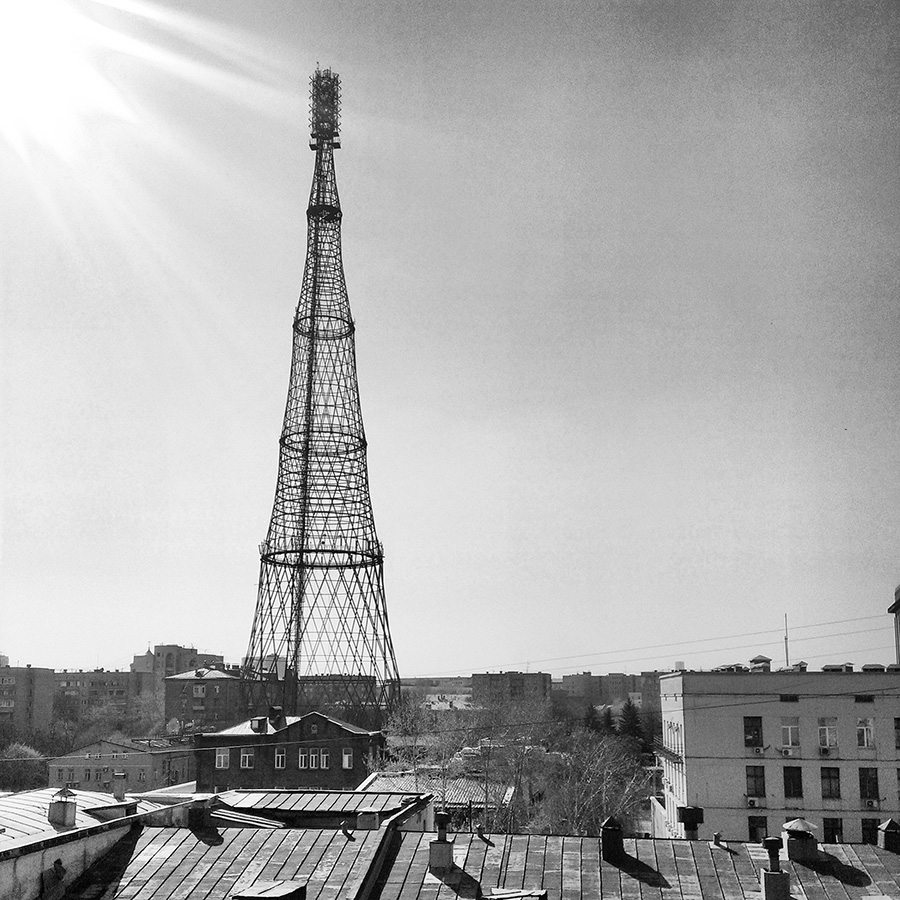
"a new tower is better than this (^above pictured) old one"
There is a feeling that monuments of constructivism here are particularly unlucky. They are adored by foreign art historians and architects, but here they are in a wildly derelict state and not appreciated. Home come?
Because in the 1930s they experimented and built out of shit. And current statesmen do not understand the charms of these strange angular shapes. And the fact that out of this emerged all of modern and functional design, such as Ikea — that they do not care about: "And where are the soft sofas, where’s the gold plating?" This judgment call is associated with the level of education and culture. I have a funny story about a real monument of architecture, which is seen out of our window — Novinsky Passage. At the opening ceremony Mayor Luzhkov in his flashy style commented on the neighborhood: "What a joy that in our city such wonderful, new shopping centers are appearing — not such junk" — pointing in the direction of Narkomfin. Because — well, that building is old, not a palace, who needs it? Neither lions nor reliefs for you. Minimalism — this is generally a philosophy that is quite difficult to understand.
Already eight years that you have been involved with this building. Have you regretted that you got involved in this story?
Of course I regretted, and not once. At some point you think: "Dang, I have put in there so much money, and it would have come in so handy now.” But the money is gone, and so there’s nothing to regret — moving on. I just love this house. It has a fantastic force of energy.
........................................................................
Check out the response to this interview:
"To treat Narkomfin as his own dacha is presumptuous": response to Senatorov
The interview with Alexander Senatorov about the future of Narkomfin caused a strong reaction in the professional community. Former representative of the Narkomfin Foundation and chief editor of Moscow Heritage, Yana Mirontseva told Gorod what the "concerned public" wants from Senatorov.
(Full translation of the response in progress)
........................................................................
RECENT ARTICLES ABOUT NARKOMFIN:
1.07.2014
«Зарядочка — а потом в столовую»
Глава группы «Коперник» Александр Сенаторов — о том, кто и как будет жить в Доме Наркомфина после реставрации
20.06.2014
Восстановление дома Наркомфина начнется в обозримом будущем
29.05.2014
Дом Наркомфина — варварское освоение вместо реставрации
12.05.2014
Дому Наркомфина требуется полноценная реставрация, а не косметический ремонт
23.04.2014
Police Halt 'Illegal' Renovations in Narkomfin
18.04.2014
Ремонтные работы в доме Наркомфина продолжаются несмотря на заявление о том, что они остановлены
17.04.2014
Власти Москвы пресекли незаконные строительные работы в Доме Наркомфина
15.04.2014
Николай Переслегин о спасении здания Наркомфина
14.04.2014
В доме Наркомфина продолжается незаконный и разрушительный ремонт
13.04.2014
Constructivist Utopia Narkomfin Endangered by Renovation Project
31.03.2014
Александр Сенаторов вернулся в конструктивизм
"Коперник" обновил проект восстановления дома Наркомфина
->Collection of news articles about Narkomfin starting from 2000












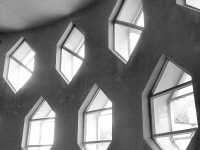
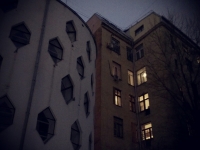
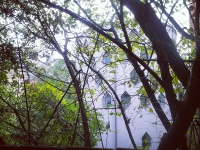
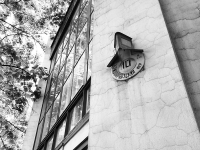
A lot of what Senatarov us saying is true, in that experimental early modernism sometimes used techniques and materials that just didn’t last. Some modernist places have to be stripped right back and replaced eg zonnestraal sanatorium in the Netherlands only some bare concrete structure now is original. The kamyshit material is a good example, it isn’t necessary to use the same material if a new modern material looks the same but functions better. I would be interested to know what happened with this material at the textile institute dormitory….
But all this should be documented and justified ahead of any works – there should be a thorough conservation / restoration plan, but this guy thinks he knows what’s right and doesn’t care for writing it down, and hasn’t been required to.
The only way to achieve a more accurate restoration would be if it were to be done by a govt body or institute (as zonnestraal was), and restored as student housing or similar. Sadly as he says noone in power appreciates these buildings enough. As a private development perhaps this is the best that can be hoped for (though the radiators should come back!)
Pingback: A look back at 2014 | THE CONSTRUCTIVIST PROJECT
Pingback: Moisei Ginzburg’s constructivist masterpiece: Narkomfin during the 1930s | The Charnel-House